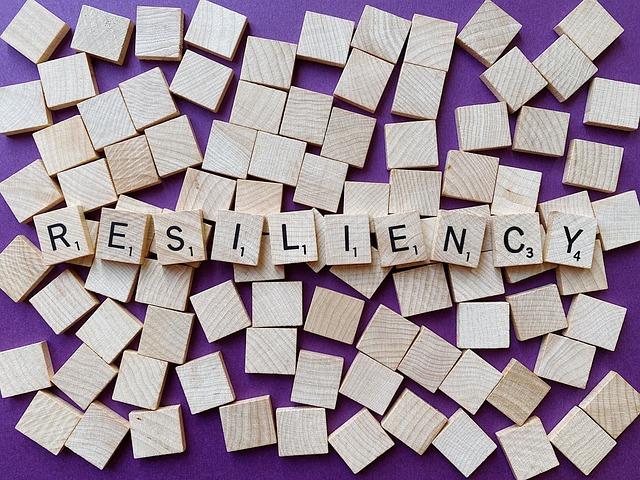In a notable transfer reflecting the severity of its environmental demanding situations, Zimbabwe has formally declared the El Niño-induced drought a countrywide crisis.This declaration comes as the rustic grapples with the devastating results of extended dry spells that experience considerably impacted agricultural manufacturing, worsened meals lack of confidence, and positioned immense power on inclined communities. Because the phenomenon referred to as El Niño continues to disrupt climate patterns throughout Southern Africa, Zimbabwe’s govt is mobilizing sources and searching for world help to mitigate the disaster. This text examines the consequences of the declaration, the wider environmental context, and the pressing steps being taken to handle the wishes of the ones suffering from this crisis.
Zimbabwe’s Declaration of El Nino Drought as a Nationwide Crisis
The new announcement from Zimbabwean government designates the continuing El Nino-induced drought as a countrywide crisis, a choice that holds important implications for the rustic’s agricultural sector and meals safety. This serious climate phenomenon has wreaked havoc throughout huge areas, resulting in decreased crop yields and exacerbating the hardships confronted by way of rural communities.Executive officers have initiated a sequence of emergency measures geared toward mitigating the affect of this crisis, which come with:
- Useful resource Allocation: Deployment of emergency finances to lend a hand affected farmers.
- Meals Support Techniques: Established order of distribution issues for very important provides.
- infrastructure Give a boost to: Infrastructure maintenance to assist in transportation and get admission to to sources.
Mavens warn that with out speedy intervention,the long-term penalties of the drought may well be devastating. Crop tests point out that staple meals comparable to maize have noticed important discounts in output, resulting in a imaginable building up in dependency on world meals help. In mild of this, the federal government may be participating with native and world help organizations to supply very important improve. A up to date desk reflecting the forecasted crop yields will also be noticed beneath:
| Crop Sort | 2022 Yield (tonnes) | 2023 Projected Yield (tonnes) |
|---|---|---|
| Maize | 1,200,000 | 600,000 |
| Wheat | 300,000 | 150,000 |
| Groundnuts | 220,000 | 100,000 |

The Have an effect on of El Nino on Zimbabwe’s Agriculture and Meals Safety
the incidence of el Niño has important implications for Zimbabwe’s agricultural panorama, in particular within the realm of grain manufacturing. Farmers within the nation,predominantly reliant on rain-fed agriculture,are witnessing the destructive results of erratic climate patterns. As drought stipulations accentuate because of El Niño, the rural sector is plagued by way of water shortages, leading to:
- Diminished Crop Yields: Key staples comparable to maize and sorghum undergo decreased manufacturing output, threatening family meals safety.
- Greater Meals Costs: The imbalance between provide and insist drives up marketplace costs, making fundamental meals pieces unaffordable for plenty of families.
- Cattle Mortality: Inadequate pasture and water negatively have an effect on farm animals well being, resulting in larger mortality charges and impacting pastoral livelihoods.
Additionally, the federal government’s reaction to those demanding situations has been to claim a countrywide crisis, aiming to mobilize sources for aid efforts. To successfully perceive the magnitude of the disaster, the affect on key agricultural signs will also be summarized as follows:
| Indicator | Earlier 12 months | Present Projections |
|---|---|---|
| Maize Manufacturing (tonnes) | 1,800,000 | 1,200,000 |
| Meals Lack of confidence Fee (%) | 30 | 50 |
| Cattle inhabitants (million) | 5.5 | 5.0 |
This alarming state of affairs underscores the pressing want for leading edge agricultural methods,enhanced water control practices,and a strong reaction plan to mitigate the opposed results of El Niño on Zimbabwe’s agricultural productiveness and general meals safety.

Executive Reaction and Emergency Measures to Mitigate Drought Results
According to the devastating results of the El Niño-induced drought, the Zimbabwean govt has enacted a sequence of emergency measures geared toward mitigating the disaster’s affect on agriculture and meals safety. Key tasks come with the implementation of water rationing methods,centered help for probably the most affected communities,and mobilization of sources for emergency meals aid efforts. the federal government has also known as upon world organizations and neighboring international locations for improve, emphasizing the need of collective motion to handle this escalating humanitarian factor.
Moreover, a countrywide process power has been established to observe the drought scenario intently and coordinate reaction methods. a number of the strategic measures are:
To verify openness and efficient allocation of sources, the federal government has pledged to unlock common updates in regards to the ongoing aid efforts and useful resource usage.
| Emergency Measure | goal |
|---|---|
| Water Rationing | Preserve water sources for essential use |
| Meals Reduction Techniques | Supply speedy help to affected households |
| Seed Distribution | Give a boost to farmers for the following planting season |
| Coaching on Resilient Practices | Fortify long-term sustainability in agriculture |

World Support and Give a boost to: How the International Neighborhood Can Assist
The present drought scenario in Zimbabwe, exacerbated by way of the El Niño phenomenon, necessitates a coordinated reaction from the world network. to successfully fight the disaster, the worldwide network can give much-needed improve via quite a lot of avenues. For example, mobilizing monetary sources geared toward emergency aid efforts can lend a hand native government ship meals and water to probably the most affected spaces. Moreover, the availability of technical help and experience in agricultural resilience methods can empower native farmers to conform and mitigate the affects of weather trade. Enhanced cooperation with humanitarian organizations too can facilitate a extra environment friendly distribution of help, making sure that it reaches the ones in dire want.
Additionally, making an investment in long-term answers is an important for development resilience towards long run droughts. The worldwide network can focal point on growing lasting agricultural practices adapted to Zimbabwe’s distinctive environmental stipulations. This may come with selling water conservation tactics, supplying drought-resistant crop types, and imposing soil control methods. Moreover, capacity-building initiatives can equip native communities with the talents and information important to make stronger meals safety and cut back vulnerability to climate-related failures. Through emphasizing each speedy aid and sustainable building, the world reaction can without a doubt lend a hand Zimbabwe no longer handiest get better from the present disaster but additionally get ready for long run demanding situations.
| Form of Give a boost to | Description |
|---|---|
| Monetary Support | Finances for emergency aid and fundamental prerequisites |
| Technical Help | Experience in agricultural resilience and adaptation |
| Humanitarian Cooperation | Collaborative efforts for efficient distribution |
| Sustainable Practices Funding | Give a boost to for water conservation and drought-resistant vegetation |
| Capability-Construction Tasks | Coaching communities for meals safety development |

Lengthy-term Methods for Local weather Resilience and Sustainable Farming Practices
As Zimbabwe grapples with the devastating results of El Niño-related drought, implementing long-term strategies for weather resilience turns into crucial. Farmers are an increasing number of turning to sustainable farming practices that may mitigate the opposed affects of fluctuations in climate patterns. Those practices come with:
- Crop diversification: Rising a lot of vegetation reduces dependency on a unmarried crop and complements meals safety.
- Soil control: Ways comparable to duvet cropping and decreased tillage make stronger soil well being and water retention.
- Water conservation strategies: Incorporating rainwater harvesting and environment friendly irrigation methods is helping maximize water utilization throughout droughts.
Moreover, community-based tasks and govt improve are essential in fostering resilience. Teaching farmers about climate-smart agriculture can empower them to conform successfully. A collaborative method is very important for growing infrastructure that helps sustainable practices, together with:
| Infrastructure | Advantages |
|---|---|
| Get admission to to renewable power | Reduces reliance on fossil fuels and improves power safety. |
| Advanced marketplace get admission to | Connects farmers to wider markets, expanding their source of revenue and resilience towards weather variability. |
| Analysis and building methods | Promotes innovation in crop types and farming tactics adapted to native stipulations. |

Neighborhood Tasks and Native Adaptation Efforts Amidst drought Demanding situations
According to the serious drought stipulations exacerbated by way of El Niño,communities throughout Zimbabwe have mobilized to mitigate the affects on livelihoods and meals safety. Native governments and non-governmental organizations are spearheading tasks designed to enhance water conservation and make stronger agricultural practices. Those efforts come with:
- Rainwater Harvesting Initiatives: Communities are growing methods to assemble and retailer rainwater, which is important for irrigation and consuming.
- Soil Moisture Conservation Ways: Farmers are studying about no-till farming and mulching to retain soil moisture and make stronger crop yields.
- Neighborhood Grain Banks: Organising native grain garage amenities is helping supply meals throughout lean seasons, making sure availability for inclined populations.
Additionally, native adaptation efforts had been enhanced via collaborative partnerships that deliver in combination quite a lot of sectors. Coaching methods fascinated by sustainable farming tactics had been built-in into network workshops to equip citizens with the important talents to thrive regardless of opposed stipulations. A notable partnership amongst native farmers, agronomists, and weather mavens goals to create a extra resilient agricultural framework. The next desk highlights probably the most key coaching subjects and their expected advantages:
| Coaching Matter | Anticipated Advantages |
|---|---|
| Water-saving Ways | Diminished water utilization and progressed crop well being |
| Crop Diversification | larger resilience towards weather variability |
| Pest and illness Control | Upper crop yields and higher meals high quality |

In abstract
Zimbabwe’s declaration of the El Niño-induced drought as a countrywide crisis underscores the pressing want for complete responses to climate-related demanding situations. As the rustic grapples with serious drought stipulations that threaten meals safety and the livelihoods of thousands and thousands, it requires each nationwide and world improve to relieve the repercussions of this environmental disaster. The placement serves as a stark reminder of the wider implications of weather trade on inclined international locations and the need for proactive measures in crisis preparedness and resilience development. As Zimbabwe navigates this hard length, the focal point should stay on fostering sustainable practices and addressing the underlying components contributing to the country’s vulnerability to excessive climate occasions. The arena watches because the country seeks to mitigate the consequences of this crisis, emphasizing the interconnected nature of our international atmosphere.
Source link : https://afric.news/2025/02/25/zimbabwe-declares-el-nino-drought-a-national-disaster-france-24-english/
Creator : Victoria Jones
Put up date : 2025-02-25 05:53:00
Copyright for syndicated content material belongs to the related Source.



